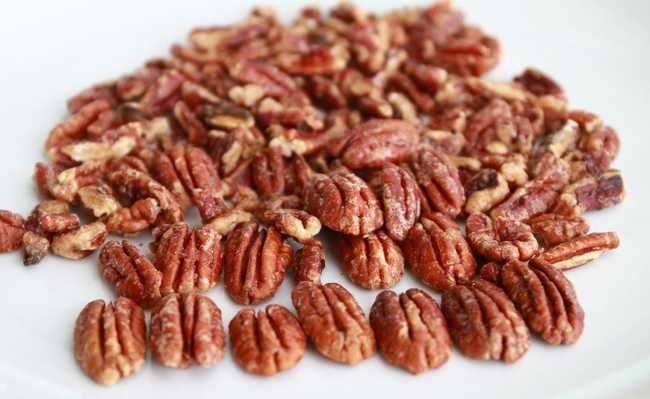Folliculitis: symptoms, treatment and prevention
Folliculitis is a disease caused by skin infection, but it has treatment, cure and prevention

Image of Nicolas Lobos in Unsplash
Folliculitis, a condition popularly called "ingrown hair", is a skin disease caused by infection in the hair follicles (the complex structure that supports the hairs and hairs). Folliculitis is usually caused by bacteria or fungi, but it can also originate from viruses and inflammation in hairs that cannot develop normally. It is a condition characterized by itching, local redness and pus, which can occur in any region of the body that has hair or hair.
folliculitis symptoms
When folliculitis is superficial, only the upper part of the hair follicle is affected. In this case, the symptoms are: small red pimples, with or without pus; reddened and inflamed skin; itching and tenderness in the region. This type of folliculitis rarely causes serious complications.
When the folliculitis is deep, boils can form. In this case, the symptoms are: large reddish areas; raised lesions with yellowish pus in the middle; sensitivity and pain, which in some cases can be severe. In cases of deep folliculitis, the chances of scarring are greater and there may be destruction of the hair follicle.
what causes folliculitis
Anyone can develop folliculitis; however, some conditions increase vulnerability. These cases include: diseases that lower immunity (such as diabetes), chronic leukemia and AIDS; presence of acne or dermatitis; use of medications such as steroid creams or long-term antibiotic therapy; overweight, among others.
The most common causes of folliculitis are friction from shaving or tight clothing; heat and sweating, such as from wearing gloves or rubber boots; dermatitis and acne; skin lesions from scratches or surgical wounds; waxing, plastic dressings or duct tape on the hair.
Types of folliculitis
superficial folliculitis
Among superficial folliculitis, the most common type is staphylococcal folliculitis. It happens when bacteria - mainly of the Staphylococcus aureus - infect the skin causing itching, local redness and pus, which can occur in any region of the body that has hair. Scratches, wounds and abrasions predispose the skin to develop staphylococcal folliculitis, since staphylococci that already live on the body surface take advantage of the wound to enter the skin.
Another type of superficial folliculitis is pseudomonas folliculitis, popularly known as "hot tub folliculitis". the bacteria Pseudomonas aeruginosa, which are the cause of this type of folliculitis, develop in aqueous environments where chlorine and pH levels are not well regulated, such as hot tubs and heated pools. The time for the disease to develop is eight hours to five days after exposure to the bacteria.
The beard region can also be affected by folliculitis. In these cases, the most common type is pseudofolliculitis. Pseudofolliculitis is inflammation of the hair follicles in the beard area caused mainly by shaving the hair. The latter, as they grow, bend and return to the interior of the skin. This condition mainly affects black men, on the face and neck, but it can also occur in anyone who shaves hair from the rest of the body. This process leads to inflammation and can leave scars.
Ptyrosporic folliculitis is another type of superficial folliculitis common in teenagers and adult men. It is caused by a fungus that causes pimples, reddened papules, and itchiness that usually affects the back, anterior chest, neck, shoulders, arms and face.
deep folliculitis
Deep folliculitis are those that affect the entire hair follicle.
sycosis beard
This type of folliculitis is characterized by small inflammations that first appear on the upper lip, chin, and jaw. These inflammations can be recurrent, being caused by daily shaving. In more severe cases, they can leave scars.
Gram-negative bacterial folliculitis
Using antibiotics for a long time is one of the conditions that lead to this type of folliculitis. That's because antibiotics can upset the skin's natural protection, allowing gram-negative bacteria to proliferate. This condition is usually not serious in most people, especially if antibiotic use is discontinued. However, in some cases they can spread across the face and cause serious injury.
Boils and carbuncles
When staphylococcal bacteria infect hair follicles, painful red papules, characteristic of boils and carbuncles, appear. Over time, the papules fill with pus and grow, becoming more painful, and in the final stage, they break out and leak a purulent secretion. Smaller boils usually do not leave scars. Anthrax (cluster of boils) and large boils, being deeper and more severe than a single boil, often leave scars.
Eosinophilic folliculitis
This case of folliculitis mainly affects people with HIV and is characterized by reddish patches and sores with pus on the face and arms. The sores tend to spread and leave the skin in the affected areas darker than their normal color. The exact cause of eosinophilic folliculitis is not known, although it may involve the same fungus responsible for pityrosporic folliculitis.
Conventional treatment for folliculitis
The treatment of folliculitis depends on the characteristics of each condition. Bacterial folliculitis can be treated with antibiotics and fungal ones with antifungals. In the case of boils or carbuncles, depending on the appearance of each one, the doctor may drain them to relieve the symptoms.
Eosinophilic folliculitis can be treated with corticosteroids, but in severe cases oral medication is required. In people with HIV, antihistamines may also be prescribed. Less severe cases usually improve on their own.
Home treatment for folliculitis
Hot compress of water and salt
One of the ways to alleviate the itchiness and inflammation caused by folliculitis is to apply warm compresses of water and salt. To do this, heat the water, add salt, soak a towel and, after wringing it, place it on the affected area of the skin.
garlic tea
When making the hot compress, garlic tea can be used instead of water. That's because garlic works as an antiseptic.
aloe vera
O aloe vera, also known as aloe vera, is another option to apply on areas affected by folliculitis. This method can even be performed together with the previous methods.
Prevention for folliculitis
One of the ways to prevent folliculitis is to avoid wearing tight clothing. Other habits that also prevent this condition are to stop shaving and shaving body hair; if it is necessary to carry out the procedure, it is recommended to massage the hair so that it becomes softer, as well as passing the shaver always in the direction of hair growth. After finishing the process, it is recommended to apply a moisturizer. It is also recommended to keep the skin clean, dry and free from abrasions or irritations, and to avoid routinely antiseptic washes, as they leave the skin dry and eliminate protective bacteria.










